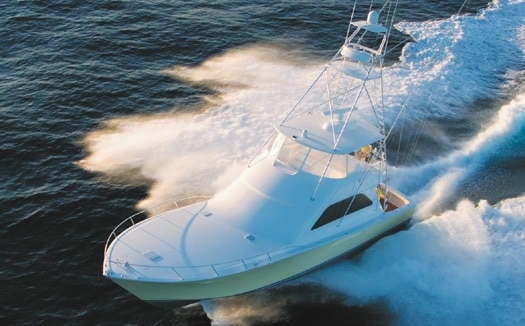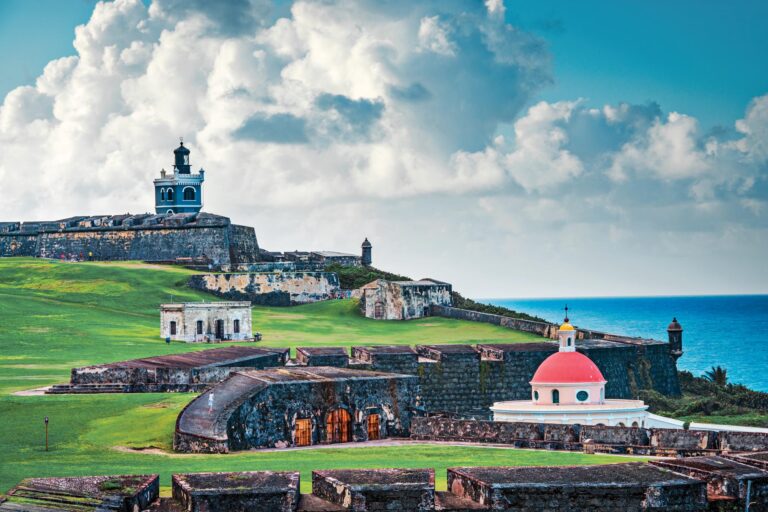
yachting/images/magazine/2006/072006/fea_viking_525x326.jpg
Purists once considered a 40-foot wooden boat with a single diesel just about perfect for raising sailfish. The single diesel resonated with the wood, pounding out a tune that only a hungry billfish could appreciate. Times and techniques, however, have certainly changed. “Spindlebeaks” are no longer thick in South Florida waters, so today, anyone who’s serious about sailfish heads south of the border in chase of the bite. They also go out in a new breed of boat that is ideal for the mission. The new Viking Yachts 64 Convertible is a perfect example.
The seasonal migration of East Coast anglers to Mexico in January has become the fashion for anglers with capable convertibles like the 64. For such boats, the trip is straightforward. Provisioning in South Florida, they head to Key West to top off their fuel tanks for the 340-nautical mile run to Isla Mujeres or Cozumel 30 miles farther on. This might seem like a long way to go to catch and release sailfish, but not so for rabid enthusiasts. The potential of a couple of dozen releases a day per boat is not farfetched, and most captains fish until they run out of bait. Add an occasional white or blue marlin to spice things up and what you have is heaven. By the end of March, most boats head east to fish for blue marlin in the Bahamas.
“Going to Mexico is really not that big a deal, with a boat like the 64,” says Capt. Ryan Higgins, who campaigns the 64 for Viking Yachts. “You basically pull into the dock, clear customs and you’re ready to fish.” When the weather is right, Higgins leaves Key West at sunup. If all goes well he’ll pass about 20 nautical miles north of the western end of Cuba by lunchtime and arrive in Isla Mujeres by late afternoon. Elapsed time: 11 hours. Higgins has made the trip annually for the past five years and suggests that the 64’s fuel capacity, speed and range match her perfectly to the mission. “Some boats have to carry cockpit fuel cells and go easy on the throttle, but given decent conditions we can make the run averaging about 33.5 knots and arrive in Mexico with about 500 gallons of fuel to spare.”
Viking’s data on the 64 (fully loaded with 1,825 hp C32 Caterpillars) indicate a cruising speed of 33.9 knots (2050 rpm) and a top speed of 39.3 knots-impressive figures, considering the payload of hats, t-shirts, spare parts for customers, and provisions for five weeks in Mexico, two weeks in the Bahamas and three weeks in the Turks and Caicos. His essentials list includes more than two month’s worth of food and bait (stowed in four freezers), as well as tackle to support eight 20-pound outfits for sailfishing in Mexican waters and sets of four 50-, 80- and 130-pound outfits for the tournament circuit in the Bahamas.
A rocket launcher is fitted for Mexico, and a full-sized chair for the Bahamas. Tackle stows in the cockpit tackle center and beneath the saloon sofa. The full complement of rods and reels fits beneath the bench seating on the bridge. The spare parts inventory for the 64 includes everything from drawer pulls and light bulbs to fuel filters and spare pumps. Higgins halves the oil change interval when cruising out of the country, as high-sulfur fuel is tough on lube oil. In addition to the Coast Guard-required safety gear, the factory 64 carries an offshore-rated life raft and an EPIRB-necessities for such a voyage.
Understanding the weather is critical, and Higgins uses Weather Channel Marine for planning and updates. “When you cover that much ground in a single day, sea conditions are rarely consistent.” The same applies for days spent fishing in Mexico. For sailfish, Higgins typically runs about 13 nautical miles offshore and fishes in 90 to 140 feet of water. “While winds and seas can kick up, we’ve never been weathered-in dockside-if we’ve wanted to go, the 64 has been willing.”
In terms of cruising comfort the 64 resides in what I consider a sweet spot, given her mission. A couple, their guests, a professional captain and mate could inhabit it without compromise. She is available with three- and four-stateroom layouts, both of which are spacious enough to make an extended period aboard a pleasure, not a chore. A helm-forward/enclosed bridge is optional on the 64, but serious anglers will no doubt choose the open bridge. The 64’s interior is finished flawlessly in the teak veneer common to all Viking convertibles.
The factory’s 64 is fitted with a voice/data sat-com as well as a single sideband. Higgins finds the latter useful for communicating with other boats making the crossing or for comparing notes with other captains. “It’s not like Palm Beach down there . We sometimes fish 100 miles apart and we try to help each other out in finding the best bite,” said Higgins. Two satellite-TV systems (one for the U.S./Bahamas and one for Mexico) provide entertainment during dockside downtime.
If you dream of sailfish, you’ve likely dreamed of sailfishing in Mexico. If you’ve dreamed of fishing aboard your own boat in these waters Viking’s new 64 Convertible is an ideal platform. In my dream I would consider the 1,825 hp Caterpillars or the 2,400 hp MTUs as the 64 can handle the muscle. Depending on where I fished, the availability of overseas service and support would influence my choice considerably. I would also opt for the three-stateroom layout in favor of more legroom and of course an open bridge with a tower, even though the enclosed bridge would tease my lust for cruising comfort. Add all the electronic goodies, a watermaker for Mexico and the Bahamas and a second generator and I’d be set. If you’re having a similar dream, the reality begins with a fully loaded price of around $3,200,000. See ya there!
Viking Yachts, (609) 296-6000; www.vikingyachts.com









